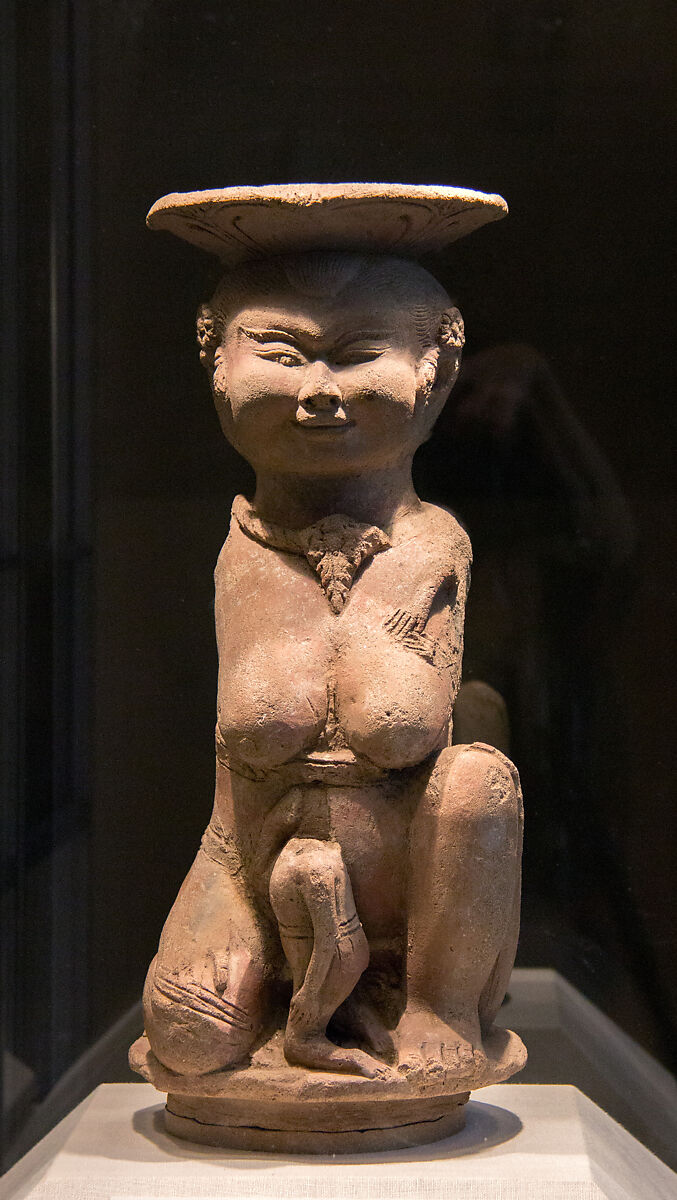
From Old Rituals to Hallmark Holiday: The History of Mother’s Day
Summary
Mother’s Day didn’t just spring out of greeting card companies! It has a long and complex history, from ancient goddess worship and Christian traditions to social activism and, yes, commercialization. Today, it’s celebrated worldwide with unique customs, offering a chance to honor mothers in a way that’s meaningful to each family.
Reflection Questions
- How has your personal experience shaped the way you view Mother’s Day? Do you have any special family traditions or memories linked to this day?
- Who else in your life embodies the spirit of nurturing, guidance, and support that we associate with mothers? How can you acknowledge their role?
- Mothers throughout history have used their voices for change. Is there a cause in your community that you’re passionate about? How might you channel that “mother energy” into action?
Journal Prompt
“This Mother’s Day, I choose to celebrate…” Complete this sentence. Instead of focusing on what you might receive, consider what kind of experience you’d like to have. Would it be a peaceful day alone, a heartfelt connection with loved ones, or perhaps taking action on something you care about?
Mother’s Day, as we know it—a bouquet of flowers, heartfelt cards, and perhaps a family brunch—is a relatively modern invention. However, honoring mothers and the powerful bonds of motherhood has roots stretching back millennia. This celebration’s complex journey winds through ancient festivals, early Christian traditions, social activism, and, ultimately, the savvy marketing that turned it into a global holiday. Let’s explore the origins and evolution of Mother’s Day before honoring the amazing women in our lives this year!
Tracing the History of Mother’s Day

Many ancient cultures held festivals celebrating fertility figures and mother goddesses. The Greeks honored Rhea, mother of the gods, with spring festivities. Romans had a three-day celebration for Cybele, a maternal goddess. In Egypt, symbols of motherhood were tied to the powerful goddess Isis. While not directly connected to our modern holiday, these practices show a longstanding human impulse to celebrate the feminine forces of creation and nurturing.
Mothering Sunday: A Christian Precursor
A more direct precursor to Mother’s Day emerged in the United Kingdom and parts of Europe. “Mothering Sunday” fell on the fourth Sunday of Lent in the Christian calendar. It began as a day when people would return to their “mother church,” the main church in their region, for a special service. Over time, it evolved into an annual holiday for honoring mothers. Servants would be granted a day off to visit their families, often bringing along gifts like special cakes for their mothers.
Ann Reeves Jarvis: The Woman Before the Woman Behind American Mothers’ Day
Ann Reeves Jarvis was a force to be reckoned with. Living in West Virginia (then part of Virginia) in the mid-1800s, she saw firsthand the devastating effects of poor sanitation and inadequate public health practices, especially on children and mothers. Determined to make a difference, she started organizing Mothers’ Day Work Clubs around 1858. Ten years later, Jarvis would establish a Mothers’ Friendship Day.
These clubs weren’t just social gatherings. They were practical, action-oriented groups. Jarvis mobilized women in her community to tackle the root causes of disease and mortality. They raised money to purchase medicine, hired women to work with families dealing with illnesses like tuberculosis, and educated the community about sanitation and hygiene.
When the Civil War erupted, Jarvis’s focus didn’t waver. She urged the Mothers’ Day Work Clubs to remain neutral, providing aid and care to wounded soldiers on both the Confederate and Union sides. Her efforts to promote healing and reconciliation were remarkable given the deeply divided climate of the time.
Though the Mothers’ Day Work Clubs themselves didn’t lead directly to our modern holiday, the spirit Ann Reeves Jarvis embodied—that of using motherhood as a catalyst for action and community improvement—profoundly shaped her daughter Anna. Ann also expressed her deep desire for a memorial mother’s day that honored women as much as men are honored.
Fuel your creative fire & be a part of a supportive community that values how you love to live.
subscribe to our newsletter
*please check your Spam folder for the latest DesignDash Magazine issue immediately after subscription

Julia Ward Howe’s Proclamation
While Julia Ward Howe didn’t directly establish the Mother’s Day holiday we celebrate today, she played a crucial role in shaping the ideas of collective action and peace that are sometimes associated with the spirit of Mother’s Day. In 1870, deeply affected by the devastation of the American Civil War and the Franco-Prussian War, Howe wrote her powerful “Proclamation.” This was a call to action for women to unite across borders for the cause of peace and to protest the senseless loss of life caused by war.
Howe passionately advocated for a yearly “Mother’s Day for Peace,” to be celebrated globally on June 2nd. She organized large Mother’s Day peace gatherings in Boston for several years. Howe’s vision wasn’t about flowers and brunch. Her idea of Mother’s Day was deeply intertwined with social activism and the belief that mothers had a unique moral authority to demand an end to violence. Her activism was less about the traditional “nurturing mother” archetype and more about women using their social power to advocate for causes. The Mother’s Day service she held was repeated in Boston until the years preceding World War I, after which Anna Jarvis urged Woodrow Wilson to create an official date of honor and it became a more secular holiday.
Anna Jarvis: The Woman Who Made It Official
The woman who actually led to the founding of our modern Mother’s Day was a woman named Miss Anna Jarvis of Philadelphia. Following the death of her mother, Ann Reeves Jarvis (the aforementioned social activist), Anna began a determined campaign to create a national day recognizing mothers of all backgrounds in honor of her mother’s lifelong activism.
She found support from influential individuals, organized a massive letter-writing campaign, established the Mother’s Day International Association, and tirelessly lobbied politicians. Her persistence paid off when, in 1914, President Woodrow Wilson signed a proclamation establishing Mother’s Day as a national holiday. The Mother’s Day Proclamation announced that the holiday would be observed on the second Sunday of May each year. Anna actually celebrated her first Mother’s Day on May 12, 1907—seven years before the official holiday.
Commercialization and a Complicated Legacy
Anna Jarvis envisioned Mother’s Day as a time for personal reflection, writing letters expressing love and gratitude, or attending church services. However, the holiday’s rapid commercialization was something she came to despise vehemently. After Wilson adopted Mother’s Day, it evolved into a capitalist dream.
Florists, card companies, and confectioners quickly seized the opportunity for profit, turning her sentimental vision into a consumer-driven multi day celebration. Jarvis spent years and a significant portion of her inheritance fighting this transformation, even protesting against the sale of Mother’s Day cards.
The Evolution of Mother’s Day Traditions
Despite Jarvis’s disapproval, the traditions we associate with Mother’s Day flourished. The giving of carnations became customary, with pink or red carnations representing a living mother and white symbolizing one who had passed away. Restaurants offered special Mother’s Day brunches, and the exchange of cards and gifts became central to the celebration.
Beyond the Hallmark Card: Inclusivity and Nuance
Our understanding of motherhood and what it signifies is more expansive than it was in Anna Jarvis’s time. It’s crucial to acknowledge that Mother’s Day can be a complex time. For some, it’s a joyous celebration, yet for others, it can highlight loss, strained relationships, or the longing for motherhood that remains unfulfilled.
Observing Mother’s Day Around the Globe
Mother’s Day isn’t just an American affair. It’s celebrated worldwide, though often on different dates and with unique customs that reflect each country’s cultural heritage. From Mexico to Japan, here’s a brief look at a few local mother’s day traditions around the world.
Middle East (March 21st)
Mother’s Day in most Middle Eastern countries falls on March 21st, the Spring Equinox. This tradition is heavily influenced by Egypt, where journalist Mustafa Amin is credited with introducing the modern concept of Mother’s Day in the 1940s.
Mexico (May 10th)
In Mexico, Mother’s Day, or ‘Día de las Madres,’ is fixed on May 10th each year, regardless of the day of the week. It’s a vibrant celebration filled with music and food. Children often serenade their mothers with mariachi bands, and families gather for large festive meals.
United Kingdom (March 26th)
The UK maintains the tradition of “Mothering Sunday,” with its roots in the 16th century. It falls on the fourth Sunday of Lent – in 2024, that’s March 26th. Gift-giving is common and focuses on small tokens such as flowers or spending time with loved ones.
Across Africa (Various Dates)
In South Africa, Mother’s Day occurs on the second Sunday of May, aligned with many Western countries. In Nigeria, Mothering Sunday, sometimes celebrated in March, draws from the British tradition. Ethiopians celebrate mothers as part of Antrosht, a multi-day festival at the end of the rainy season (usually in Fall).
Thailand (August 12th)
Thailand aligns its Mother’s Day with the birthday of Queen Sirikit, beloved for her role as a mother figure to the nation. The 2024 celebration falls on August 12th. It features parades, ceremonies, and the offering of jasmine (symbolic of motherhood) to mothers and grandmothers.
Japan (Second Sunday of May)
Like the US, Japan observes Mother’s Day on the second Sunday of May, which will be May 12th in 2024. Children often present their mothers with red carnations and handcrafted gifts, showcasing gratitude and affection.
Design Dash
Join us in designing a life you love.
Styling Spaces Seasonally for Evergreen Portfolio Content + Of-the-Moment Marketing
Learn how interior designers can style spaces seasonally to create both evergreen portfolio images and timely marketing content.
Counting Down Our Most Listened-To Episodes of 2025: Brittny Button
Learn why our conversation with Brittny Button became one of the DesignDash Podcast’s most listened-to episodes of 2025.
10 Finn Juhl Furniture Pieces That Embody Danish Modern Design
As evidenced by these 10 iconic Finn Juhl furniture pieces, he exemplified Danish Modernism through sculptural forms and architectural angles.
Counting Down Our Most Listened-To Episodes of 2025: Jamie Young
On the DesignDash Podcast, enjoy Jamie Young’s insights on building a timeless design brand through grit, reinvention, and strategic growth
What Do I Do If My First Client Ghosts Me After I Send the Proposal?
Learn how to respond when a PNC goes silent after receiving a proposal from your firm. Promise, ghosting is almost never a reflection of your work!
What Is Gustavian Interior Design, And Is It Still Relevant Today?
Georgian interior design’s light palettes, balanced proportions, and restrained Neoclassical details make the Swedish style relevant.









